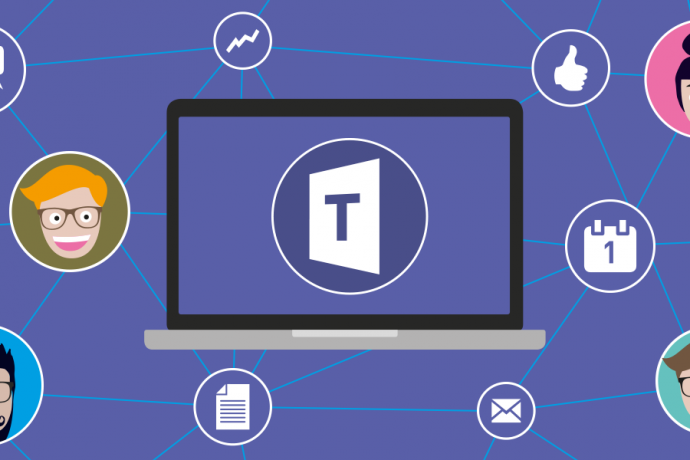We’re living in the Age of “The Cloud” – a global information network powered by vast arrays of data centers scattered throughout the world. It’s dominated by a handful of providers including Amazon, Microsoft, and Google. But our future can’t all run on The Cloud.
The Cloud’s growth has been spectacular and seemingly without end over the past few years. Everything seems limitless and possible.
There are limits however to what the Cloud can do. We are about to test how much and what the Cloud can do for us immediately in real-time, while also ensuring security, privacy and safety. Our continued progress and growth will not be slowed down however thanks to a new stage of technology: edge computing.
The next stage of computing will be driven by new sources of computing demand at the edge of networks, close to users.
The next stage includes 5G networks, autonomous driving vehicles, robots and drones in swarms doing all kinds of work, and embedded connected computing in everything, a/k/a “The Internet of Things” (“IoT”).

In addition, new kinds of work and services – including telemedicine and telework that has to be done 24/7 in real-time – will create local computing needs. This is not the “asynchrononous” remote work of knowledge workers connected through Cloud Computing and messaging platforms such as Slack or Microsoft Teams. There will be mission critical work which needs to be done immediately and this will produce an ocean of data.
A tidal wave of real-time 24/7 computing will overwhelm “the Cloud” despite what it has enabled . Enter “Edge Computing”.
“Edge computing is a distributed computing paradigm that brings computation and data storage closer to the location where it is needed, to improve response times and save bandwidth.”
Edge Computing is built on a philosophy of computing that in plain languages means more local computing will be substituted for cloud computing. And it’s happening soon according to various research firms.
What does Edge computing’s workflow currently look like for now?

More computing and connecting will happen at the “edge” of networks – where users are – because of trends including the growth of “Internet of Things” (“IoT”) devices like cameras, home appliances, wearable tech and work devices. According to research provider Statista, it is predicted that by 2025 there will be 75B+ IoT devices installed throughout the world.
Research firm CB Insights estimates that the “global IoT market is expected to exceed $1.1T by 2026, growing nearly five-fold from its 2018 size of $190B.”
These new needs will also shape the scale and type of demand for local servers and data storage – including edge servers.
The trend, according to IDC’s “Worldwide Edge Infrastructure (Compute and Storage) Forecast, 2019-2023”:
“With enhanced interconnectivity enabling improved edge access to more core applications, and with new IoT and industry-specific business use cases, edge infrastructure is poised to be one of the main growth engines in the server and storage market for the next decade and beyond.”
Research firm Gartner estimated that by 2025, 75% of processing won’t happen on the Cloud. CB Insights projected that “the edge computing infrastructure market is projected to be worth $700B by 2028….”

Predecessors of edge computing are the content delivery networks from 20 years ago that cached web and video content on servers located near users. These networks would eventually host software in addition to content and support local computing. Virtual machines would expand these capabilities.
As long as there was enough “pipe”, bandwidth, computing power and storage to support it, the Cloud and related software would do most of the heavy lifting from a distance within massive server farms.
With the explosion of data about to be created at the “edge”, there won’t be enough “pipe” to support this growth. Transfer rates and response time won’t be enough.
The need to compute at the network “edges”, close to users, grows quickly.

“the aim of Edge Computing is to move the computation away from data centers towards the edge of the network, exploiting smart objects, mobile phones or network gateways to perform tasks and provide services on behalf of the cloud.”
What is Edge Computing supposed to provide?
It would support content caching (like the CDNs of 20 years ago), services delivery, storage and smooth IoT experiences. In fact, CDNs, such as Akamai and Cloudflare, have evolved and gone beyond providing static content caching. They have expanded with “as a Service” offerings including containers, virtual machines, ”bare metal”, and serverless.
Think of edge computing as local service businesses in a neighborhood strip mall, as opposed to the massive big box retail giants requiring a road trip. Volume, traffic and distance are reduced. The same with latency and cost of transport, i.e. transmission and bandwidth. Local needs are met locally.
Edge Computing’s appeal comes from its potential for “Computation offloading”. Early research revealed that “real-time applications, such as facial recognition algorithms, showed considerable improvements in response times.” Services normally delivered through the Cloud could be replaced by local machines to save time on execution. Is this relevant today? Yes.
Imagine what it would be like to have to support a lot of security cameras at a government or large business facility. One camera, constantly connected to the Cloud is one thing, but imagine the data from dozens, hundreds or thousands of them – all at once. Edge computing would cut down on using the Cloud to when it was necessary to update material changes.
In an edge computing scenario involving many devices, such as security cameras, edge gateways will crunch the data from edge devices like security cameras, and send only relevant updates to cloud servers only as needed. They would also send data back to other edge devices, including smart phones now, and someday self-driving (autonomous) cars, real-time.
What other use cases for edge computing can we expect?
You could expect “cloud gaming, where some aspects of a game could run in the cloud, while the rendered video is transferred to lightweight clients running on devices such as mobile phones, VR glasses, etc. […also known as pixel streaming]…, connected cars, autonomous cars, smart cities… and home automation systems.” (Wikipedia)
5G will be a key according to a report, “5G, IoT and Edge Compute Trends”:
“5G technology will change traffic demand patterns, providing the biggest driver for edge computing in mobile cellular networks….”
“[5G] low-latency applications include IoT analytics, machine learning, virtual reality, autonomous vehicles as those that “have new bandwidth and latency characteristics that will require support from edge-compute infrastructure.”
One of the most dramatic Edge Computing use cases are autonomous cars. This is about the need for split second decision making to prevent injury and loss of life. Self-driving transports will rely on edge computing.
The giants of Cloud Computing are already investing in edge computing.

One of the most obvious examples of edge computing is Apple’s iPhone.
The iPhone’s security and privacy features are well known demonstrations of edge computing’s value. The encryption of biometric information on the iPhone is an example of both computing offloading and of how edge computing can address security concerns with Cloud computing.
But it’s clear that Cloud Computing’s giants are preparing for the Edge.
Microsoft’s Edge Investments:
Microsoft has planned to spend $5 billion in IoT by 2022 in edge computing. Its “Azure IoT Edge” would deliver cloud analytics to edge devices without needing a connection. It also wanted to deliver machine learning to the edge through using chipmaker Nvidia’s T4 Tensor Core GPUs. It has partnered with Cisco and acquired Affirm Networks as part of its strategy.
Amazon’s Edge Investments:
Amazon has also been investing by “working on its own AI chips for Alexa.”
Edge computing done locally within Amazon user devices such as Echo means avoiding having to do all the work on the Cloud – i.e. Amazon’s servers. It means faster replies to users’ requests and lower demand on cloud servers means cheaper work for Cloud computations.

The company’s release of AWS Greengrass in 2017 provided AWS support to local devices so they can “act locally on the data they generate, while still using the cloud for management, analytics, and durable storage.” It also used MIT’s open source FREERTOS, a real-time OS designed to control microcontroller chips installed in various small devices found at the edge, such as home appliances and wearables.

Amazon also provides AWS Outpost which is a mini data center modeled after Amazon’s servers, complete with computing and storage, which can be installed at customers’ facilities and managed by Amazon. This is like an edge computing service prepackaged for users.
In addition to its internal investments and service offerings, Amazon has also partnered with telecom companies, including Verizon and Vodafone.
Google’s Edge Investments:
Like Amazon, Google released products in 2018 to improve development of edge devices: hardware chip Edge TPU and Cloud IoT Edge, a software stack. Google’s intention was to provide “Google Cloud’s powerful data processing and machine learning to billions of edge devices… so they can act on the data from their sensors in real time and predict outcomes locally.”
Google’s Progressive Web Apps provides offline-first functionality. Users can open a “websites” locally without an internet connection (and using the Cloud), to work, save your changes, and update to the cloud later.
The heart of Google Cloud’s Edge solutions however is Anthos. It’s broader strategy is to partner with 5G & telecom operators just like Amazon has.
Google Cloud CEO Thomas Kurian explained that “Google Cloud can partner with telecommunications companies to rapidly enable a global distributed edge by lighting up thousands of edge locations that are already deployed in these telecom networks.” The company’s “Global Mobile Edge Cloud (GMEC) strategy… [would] deliver a portfolio and marketplace of 5G solutions built jointly with telecommunications companies”
“Anthos for Telecom… [would bring Google’s] cloud application platform to the network edge, allowing telecommunications companies to run their applications wherever it makes the most sense. Much like Android provided an open platform for mobile-centric applications, Anthos for Telecom—based on open-source Kubernetes—will provide a similar open platform for network-centric applications.”
Nvidia, chipmaker famed for gaming, Crypto and AI, is on the Edge too:
Another player in edge computing is chip maker NVIDIA, with products including artificial intelligence functionality. Its relatively small Jetson Xavier NX module, which could fit in a wallet, could be integrated inside potential edge devices such as drones, robots and medical devices. The use of such AI chips that can process data at the edge means faster real-time responses and reduces reliance on AI algorithms which require Cloud computing’s number-crunching.
It is a given that more changes are coming for Cloud giants as well as other competitors and providers as Edge Computing’s infrastructure evolves.
It won’t be smooth and seamless. Technical hurdles facing the Edge include:
The availability of the right kind of power supply infrastructure:
Servers providing remote services good enough to substitute for Cloud services, for multiple commercial customers require high-power processors and in-memory data. They also will need “high-voltage, three-phase electricity”. Three phase electric power doesn’t exist in most relatively remote, rural locations. (Ordinary 120V AC current is single-phase and the norm.)
Internet of Things (IoT) could create a new digital divide and also be vulnerable to attack:
For Internet-of-Things applications such as Mississippi’s trials of remote heart monitors, an inadequate power infrastructure could create a “have” vs. “have not” Edge divide.
With so many devices coming online at the edge, this means more attack surfaces for hacking.
Before we even get to have these problems, another challenge is both regulatory and technical within the intersection of telecom and computing technologies and industries. The Telecom industry – which is driving 5G deployment – may create barriers to edge computing solutions and see them as competitive threats.
Edge Computing is happening regardless of these and many other worries. It’s coming as the world’s tech and network infrastructure evolves.
Right now more data and work is happening on at network edges. Many small and local businesses and entrepreneurs are going to need help with finding the right edge computing solutions over the next few years.
If you have questions about what this trend means for you, please reach out and contact us.





